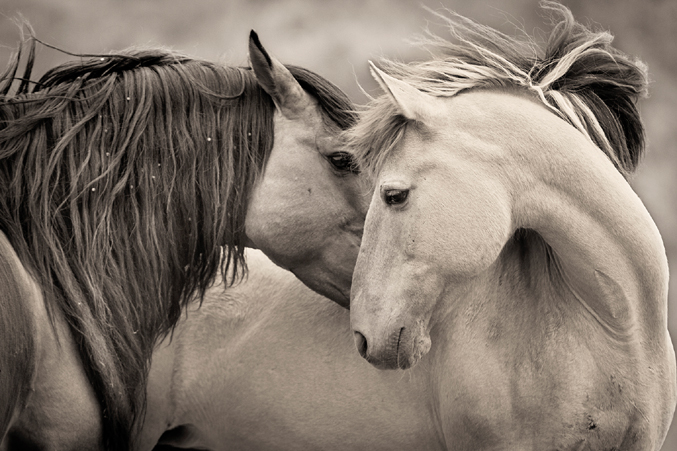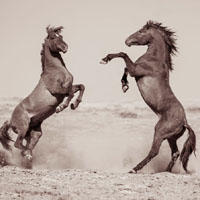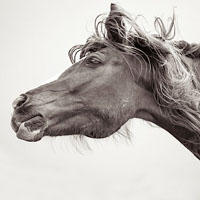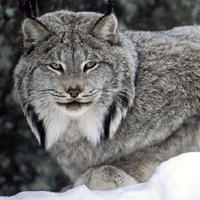Embrace Beauty by Kimerlee Curyl (www.kimerleecuryl.com)
In the Year of the Horse (and beyond), photographer Kimerlee Curyl focuses on the dwindling herds of wild horses in America.
Steeped in myth and symbolism, wild horses are a universal symbol of freedom in many cultures. Fine art photographer Kimerlee Curyl, who photographs wild horses in remote American wilderness rangelands, hopes to inspire others to protect and preserve the animals by expressing their spirits in exquisite eco-friendly, large-format museum-quality giclée prints. Proceeds from sales of the prints benefit Return to Freedom American Wild Horse Sanctuary and the Black Hills Wild Horse Sanctuary, two non-profit organizations working to save and protect America’s remaining wild horses and burros.
In the United States, wild horses are rapidly disappearing from government-managed wilderness spaces as the Bureau of Land Management (BLM) fences off their water sources and rounds them up by helicopter into holding facilities. Since 1971, more than 270,000 wild horses and burros have been removed from public land that was designated for their protection. Thousands are being sent to slaughterhouses and sold as “delicacy meat,” says Curyl, despite a law against selling wild horses for food.
On public lands, cattle now outnumber wild horses by at least 50 to 1. The BLM has overwhelmingly favored cattle in setting “appropriate” wild horse population levels, resulting in indiscriminate and often inhumane removal of horses and burros. From more than 2 million in its heyday, our wild horse population has now dwindled to fewer than 33,000.
The BLM is driving out wild horses to lease public land to private cattle industries even though horses cause much less damage to public lands than livestock.
A National Academy of Sciences study found that, in one year, livestock consumed 70 percent of grazing resources on public lands while wild horses and burros consumed less than 5 percent.
Curyl, whose first word was “horse,” believes in “the power of art to create change.” Certainly the spirits of the horses she captures in her images reach and move people. “If you really stop and look into the eye of a horse, it’s all right there, and that’s because they’re so in the moment,” she says. “They don’t think about yesterday, and they don’t think about tomorrow. They don’t even think about the last minute. For so many of us today, that’s what we are looking for.”



